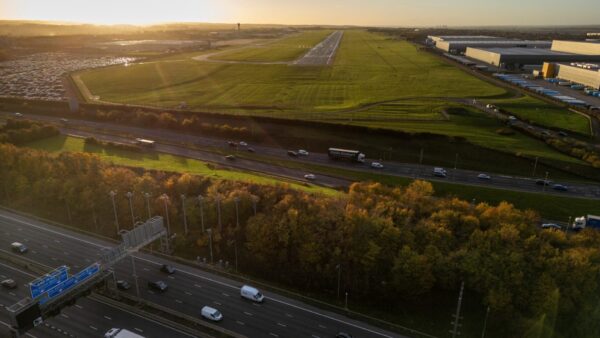
Construction Leadership Council chair Andrew Wolstenholme on driving industry productivity.
It’s fair to say there has been a good deal of industry scepticism surrounding the Construction Leadership Council since it was set up in 2013.
Established to improve performance of the industry and oversee implementation of Construction 2025, the government’s industrial strategy for construction, CLC was set ambitious targets to oversee including a 33% reduction in cost and
50% reduction in project time. But there were always doubts about whether it would become a heavyweight driver of change or would simply become another well-meaning talking shop.
Changes in the line up on both industry and government side and the scrapping of the chief construction adviser role in 2015 have ratcheted up the scepticism. Clear and obvious wins have been thin on the ground and dialogue with the industry at large about what the 13-member Council is actually up to has been scant.
However, its current industry chair, Andrew Wolstenholme, Crossrail’s chief executive, has pledged to improve transparency and streamline priorities. So CM asked him, can CLC confound its critics and really make a difference?
Why do you think there’s still a role for the CLC?
This is the best industry to work in. Look at what we’ve achieved in the past few years: High Speed One, Terminal 5 and the London 2012 Olympics. Crossrail is on time and budget and we have new projects such as HS2, Hinckley Point and Tideway about to break ground.
“The supply chain should be making more profit, investing more in skills and innovation and competing more with our international rivals.”
However, there is a huge amount of room for improvement. Too often, the stop-start nature of investment, poor client leadership and low profit margins have created a fragmented supply chain that has little incentive to invest in the skills, technology and innovation needed to deliver a step change in productivity.
The role of the CLC is to be the bridge between government and the industry, helping to drive the change we need.
How do you want it to work with the rest of the industry?
I am determined that the Council should become more strategic, looking at how we can drive transformational change, rather than focusing on the more tactical issues.
We are already working closely with the industry through our six workstreams. For example:
- The UKGBC, CIC and CPA are all active members of the Green Construction Board and working closely with Mike Putnam [chief executive of Skanska, member of the CLC and chair of the GCB – the sustainability workstream of the CLC].
- Build Offsite is closely involved with Mike Chaldecott’s [general delegate for Saint-Gobain in the UK & Ireland] work on Smart Construction, another workstream.
- Build UK and the Infrastructure Client Group (ICG) are working with Ann Bentley, global chair, Rider Levett Bucknall and chair of the supply chain and business models workstream.
Recently we invited around 50 CEOs from across the industry to our first leadership briefing and we have had a great response with many of the attendees now committing time to one of the Council’s key work areas.
What’s the relationship between CLC and government and how has this changed under Theresa May?
The government is firmly behind this agenda and the need to demonstrate the best of British industry to the whole world is a priority following the EU referendum.
Construction minister and CLC co-chair, Jesse Norman, has taken a keen interest – he attends all our formal CLC meetings.
There is interest and support in what we are doing from a range of government departments, including the DfT and the Treasury. Tony Meggs from the Infrastructure and Projects Authority sits on the Council and ensures we have that cross-governmental support and vision.
One thing I am particularly pleased about is the renewed focus on industrial strategy. Construction and infrastructure must be at the heart of this and the CLC is working closely with Jesse Norman on how the sector can support the government’s vision for an economy that works for everyone.
What are the Council’s priorities?
Leadership councils representing other sectors have achieved great improvements in productivity and competitiveness by focusing on a few big things, doing them well, and bringing the industry with them.
“I am determined that the Council should become more strategic, looking at how we can drive transformational change, rather than focusing on the more tactical issues.”
The big question is, where should the CLC focus? Our answer is:
- Delivering better, more certain outcomes using digital technologies;
- Improving productivity, quality and safety by increasing the use of offsite manufacturing;
- Optimising through-life performance on new and existing assets through the use of smart technology.
By focusing on these three themes, and working with other organisations to join forces, mobilise and accelerate change, I believe we can generate real benefits for the whole industry.
How will you be feeding into the government’s proposed industrial strategy and Brexit negotiations?
Jesse Norman has made it very clear that he sees construction as a critical part of the government’s industrial strategy and that the CLC has an important role to play in shaping this. We will be gathering input from the across the industry and feeding back to BEIS.
Do you have any frustrations?
We can learn a lot from other sectors, such as automotive or aerospace. They have reached a point a where they are comfortable collaborating with one another and are reaping the rewards through a shared, greater commercial advantage. While we are six times larger than the automotive sector, their ability to work together on a few, big ideas is the difference at the moment.
What would success look like? And/or the first staging post to success?
We are aiming to achieve the ambitions of Construction 2025: a 30% reduction in cost; a 50% reduction in project time; a 50% reduction in carbon emissions; a 50% reduction in the trade gap.
However, true success can only really be measured by the end users of what we are building. That might be more houses, more rail capacity, improved car journeys or cheaper energy. From an industry point of view, the supply chain should be making more profit, investing more in skills and innovation and competing more with our international rivals.
If you could wave a magic wand what would you wish for?
I would like to see more young people choosing engineering and construction as a career – in particular more women.
It’s vital that we are able to supply the upcoming infrastructure projects with a constant flow of the young, talented and diverse people who we will need to build the railways, roads and houses of the future.
What would you like from the industry to help achieve your aims?
We would encourage people from all parts of the industry – house builders, construction firms, architects, designers or industry bodies – to make contact with one of the workstream leads on the CLC to see how they can support the change agenda. We need input from every part of the sector, so I would urge people in the industry to email [email protected] to find out what the workstreams are and who is taking the lead.
Comments
Comments are closed.











A great article thanks Andrew and I’d like to congratulate the CLC on the progress made. Sure, we have a long way to go but let’s celebrate our successes and work hard to replicate and build on them in future. Achieving the Construction 2025 goals will benefit us all, and importantly, will also provide great benefit to wider society and the environment.